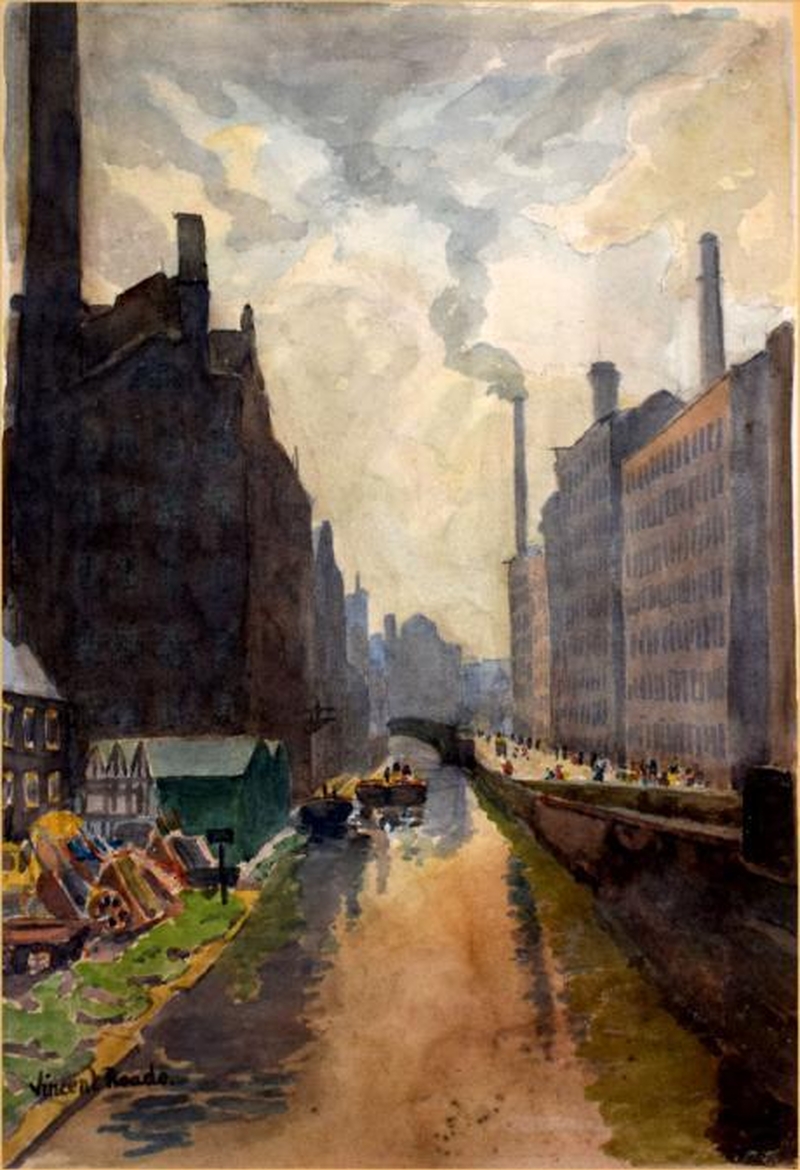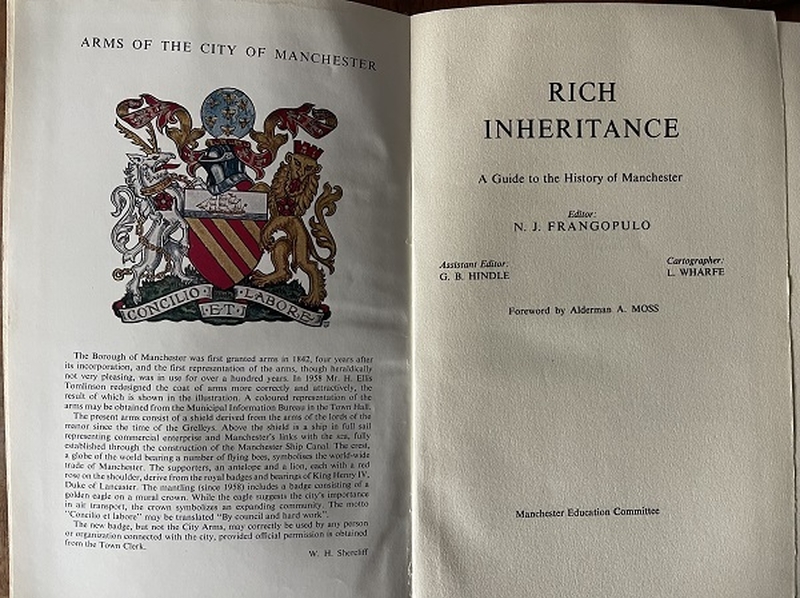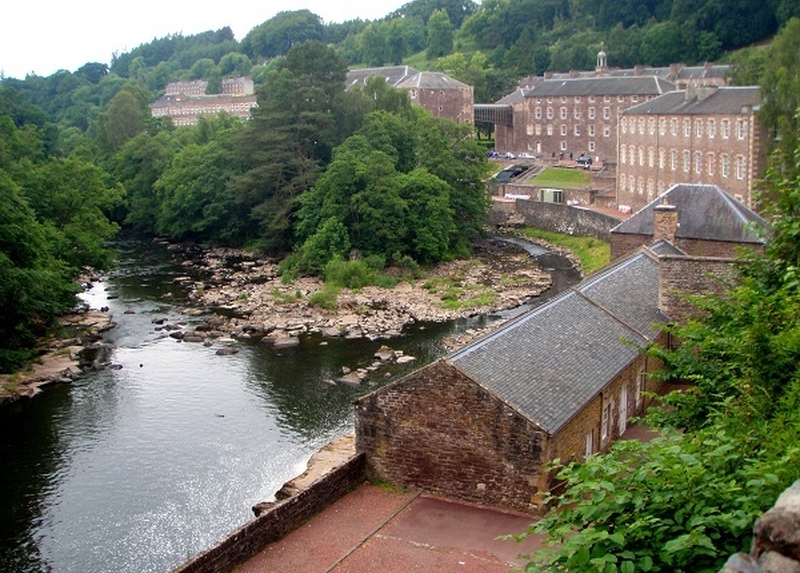Jonathan Schofield helps you cotton onto another Manchester myth
Rain, humidity, cotton production and Manchester. The four are linked, right?
Everybody knows the wet climate of Manchester is the reason behind this city becoming the dominant textile town of the country and the world from the late eighteenth century until World War II. It’s a truth universally known that Manchester’s unique relatively (very relatively) warm precipitation allowed cotton fibres to be separated more easily and thus cotton spinning to be encouraged.
None of Manchester's would-be rivals had the non-climatic competitive advantages favouring this city
But oops, it's all a daft myth: an erroneous cliché, similar to the empty-headed one about the IRA bomb of 1996 and Manchester city centre’s redevelopment. Or even the one about Manchester being the country’s wettest city.
If the climate is the reason behind mass production in the cotton industry then the latter could have been better headquartered elsewhere in the UK. It really didn’t make sense for it to be in Manchester and might have been better located in the port cities of Liverpool (pictured above), Glasgow or Bristol where the imported raw materials arrived. Remember we can’t grow cotton in the UK so it makes no sense to place HQ 35 miles inland?
Let’s look at the weather variances using last month, September, as the base. We'll see there's hardly enough difference between the cities to make Manchester stand out.
In September the mean high-temperature range in Glasgow, Manchester, Liverpool and Bristol lies between 15℃ and 18℃, with Glasgow at the lower end, Bristol at the higher and Manchester on 17℃. September rain falls between 9 and 12 days a month in the various cities with Bristol again lowest at 9 and Glasgow with 12 and Manchester with 11. In other words, there simply is no meaningful difference.

Ah, but what about humidity levels? Here the range is between 79% and 83% with Manchester at the highest percentage. But still, the difference is miniscule.
These differentials are reflected across the year. So, can these tiny points of weather difference really explain the vast cotton industry, the world’s largest commercial enterprise through the nineteenth century, being centred on Manchester’s Royal Exchange? No, it’s nonsense. The rainfall reason is a myth. One that’s been repeated so often it now feels like the truth.
Interestingly, many of the authorities writing on the cotton industry are silent on a damp climate being the reason behind Manchester being the centre of the trade. Two examples. Frangopulo’s Rich Heritance (1962) ignores the weather as a factor, Daniels’ The Early English Cotton Industry (1920) can’t be bothered mentioning it either.

So why Manchester for cotton?
The reasons are straightforward.
Manchester already had a centuries-old textile production industry using British and Irish raw materials such as wool and flax. Liverpool didn’t and Liverpool was the busiest port in the country, facing west so that Asian and European cotton reached it before other ports.
So when Liverpool started to bring in raw cotton in the eighteenth century working it up into a finished material was displaced east to the Greater Manchester region, East Lancashire, north-east Cheshire and parts of Derbyshire.
Manchester was the biggest of the towns in this area and more pertinently had an archaic form of administration which was a bad thing in some respects and a good thing in others. In terms of enterprise, it was the latter, as it effectively made Manchester a free town unburdened by guilds and restrictive practices. The town encouraged entrepreneurship.

Geographically it was favoured too. It was the hub in a wheel of towns from the west to the south east, the natural leader of these places. Meanwhile, access to Liverpool was across a flat plain so the necessary infrastructure could be developed with few natural limitations. This was another advantage that meant raw cotton could be imported and finished cotton exported easily.
The industrial revolution
Finally, the raw cotton started arriving at a time when the industrial revolution was firing up. It was remarkable timing and a period this region could exploit fully. Manchester was sitting on coal to fire the steam engines, it even had the right type of water, soft water for the washing and bleaching of cotton. Hard water is no good and, as every Southerner knows, clogs up kettles with mineral residue. It got better for Manchester too as the industrial revolution progressed and other assets were needed such as salt for chemical processes. The largest UK extraction of salt took place (and still takes place) in nearby Cheshire.

This is not to say that other west-facing cities did not have their own textile industries. The hinterland of Bristol, in the Cotswolds, around Stroud, for example, had major textile concerns. Glasgow too was a big producer with Robert Owen’s New Lanark Mills merely the most famous examples of textile production.
None of these places though had the competitive advantages of the Manchester region as discussed above. They had a similar climate though, Glasgow in particular.
Thus, while it is the most repeated and universally acknowledged fact behind Manchester’s textile ascendency back in the day, the climate, as the reason behind that fame and energy, turns out to be, appropriately, a damp squib.
Follow @JonathSchofield on Twitter














